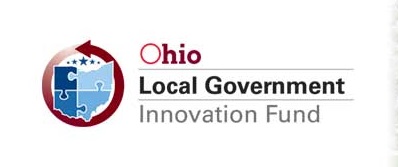On February 25, the NEOSCC Board voted unanimously to approve and endorse the Vibrant NEO 2040 Vision, Framework and Action Products. We are sharing an “Initiative A Day” so you can gain a better understanding of the vision and framework! If you would like to read all of the Initiatives, you can download them here: Recommendation and Initiatives. You can access a pdf of the entire vision chapter here. The vision chapter contains all 41 initiatives, development strategies, indicators, and matrices that identify how the recommendations, initiatives and indicators all relate.
Show your support for Vibrant NEO 2040 by adding your name to our Champions of Vibrant NEO 2040 list here.

WHAT THIS MEANS. Joint procurement is an emerging best practice in public management and administration. Though its benefits may appear obvious, joint procurements are difficult to structure owing to divergent priorities and needs. Thus, transparency and communication are critical first steps in structuring effective partnerships on procurement. An equally important question is administration of a procurement process. This has been resolved a number of ways, from vesting regional councils of government (COGs) with administering procurement and contract administration on multi-jurisdictional projects, to one-off agreements between jurisdictions in which one partner agrees to manage procurement and contracting.
Fortunately, Ohio has been a pioneer in the practice of joint procurement, particularly in the transportation sector. Three of the cases featured in a recent report from the Greater Ohio Policy Center were from the Northeast Ohio region, and the Ohio Legislature’s passage of HB 153 in 2011 eliminated a number of barriers to effective intergovernmental collaboration on procurement caused by state law—including a dramatic streamlining of the interlocal agreement process. This is a practice ripe for scaling throughout the region. In some cases, it may make sense to take the spirit of interlocal cooperation a step further and actually share or consolidate facilities, staff, and other assets. This can mean anything from jointly administering services or facilities through a contract to consolidating units of local government. Again, the State of Ohio has been a national practice leader in encouraging such arrangements.
The Beyond Boundaries initiative, a cabinet-level office dedicated to promoting interlocal collaboration on public service and goods provision, outlines eight priority domains for local governments to consider:
• Technology
• Education
• Administration
• Public safety/911 systems
• Economic development
• Fleet management and operations
• Health and human services
• Facilities and facilities maintenance
WHY THIS IS IMPORTANT. Local governments in Northeast Ohio are faced with mounting costs of providing essential services while overall regional growth remains flat. While some communities have employed one solution to this problem—poaching commercial and industrial development from other places in the region—a far healthier solution would involve pooling resources and obligations, increasing the efficiency of government while cutting costs. GETTING IT DONE. This initiative already has a strong source of leadership in the State of Ohio’s Local Government Innovation Fund and the Beyond Boundaries program, both of which are housed at the Ohio Department of Development Services. It is incumbent upon Northeast Ohio’s local governments and other jurisdictions to evaluate their obligations and explore opportunities to save on costs through sharing procurement, services, and resources. The high level of state support for sharing services, not to mention the fiscal benefits, should encourage all local governments in Northeast Ohio to act upon this promising practice. The Consolidation of the Health Departments in Summit County —In January 2011, the merger of the Summit County, Akron, and Barberton health districts took effect and became “Summit County Public Health”.
PILOT PROJECT: EfficientGovNetwork : Launched in 2009, EfficientGovNetwork is a competitive award and civic engagement program that encourages and accelerates government collaboration and efficiency by providing funds to local government collaboration projects as selected by the residents of Northeast Ohio. It was created, in part, as a response to the research co-sponsored by the Fund for Our Economic Future highlighting the duplicate nature of local government in Northeast Ohio and the high cost of delivering services.
| Lead | Municipalities, Townships, Counties; Metropolitan Planning Organizations, Councils of Governments; Ohio Department of Development Services |
| Target Community | Strategic investment areas, asset risk areas, cost risk areas |
| Implementation Complexity | Low |
These recommendations, initiatives, and products, are not one-size-fits all and some aspects of the initiatives won’t be applicable everywhere in the 12-county region. The Vibrant NEO 2040 Vision, Framework and Products are intended inspire and guide decision-making at the Metropolitan Planning Organization (MPO), Council of Government, and local levels to ensure that land use, transportation, and environmental considerations are simultaneously addressed by their processes. Ultimately, the implementation of Vibrant NEO 2040 is up to Northeast Ohio’s communities and residents. But regardless of the applicability of each initiative to any particular part of the region, the goal for each community within the Vision is the same: stability, prosperity, and a high quality of life for all of its residents.
